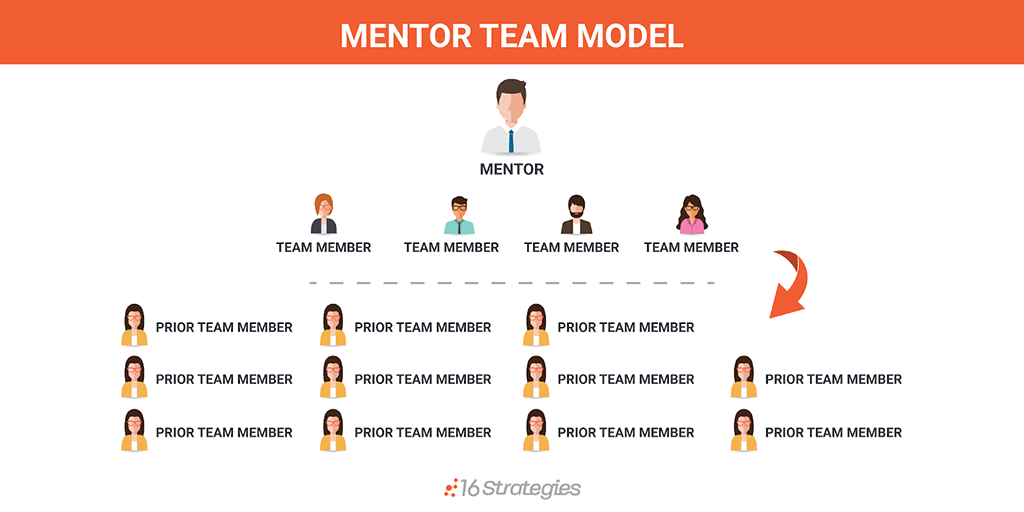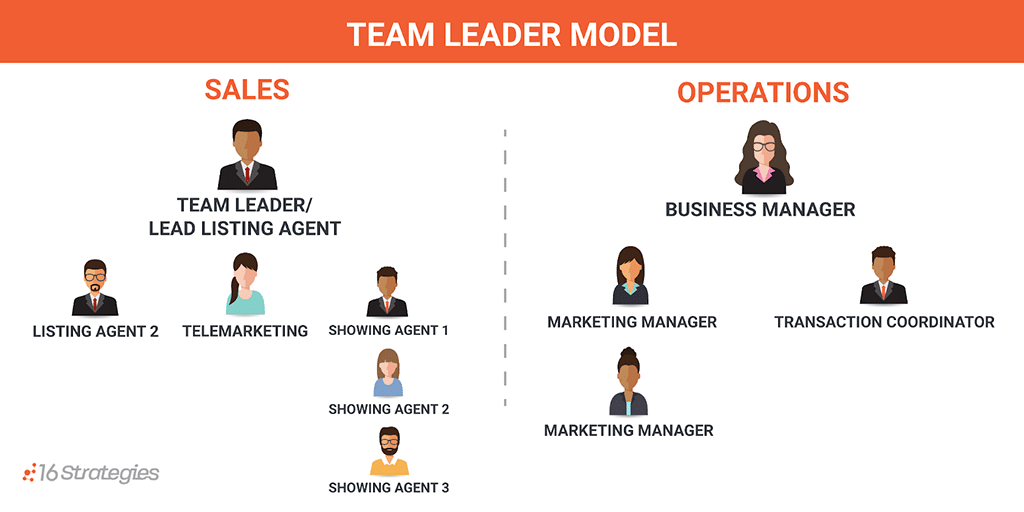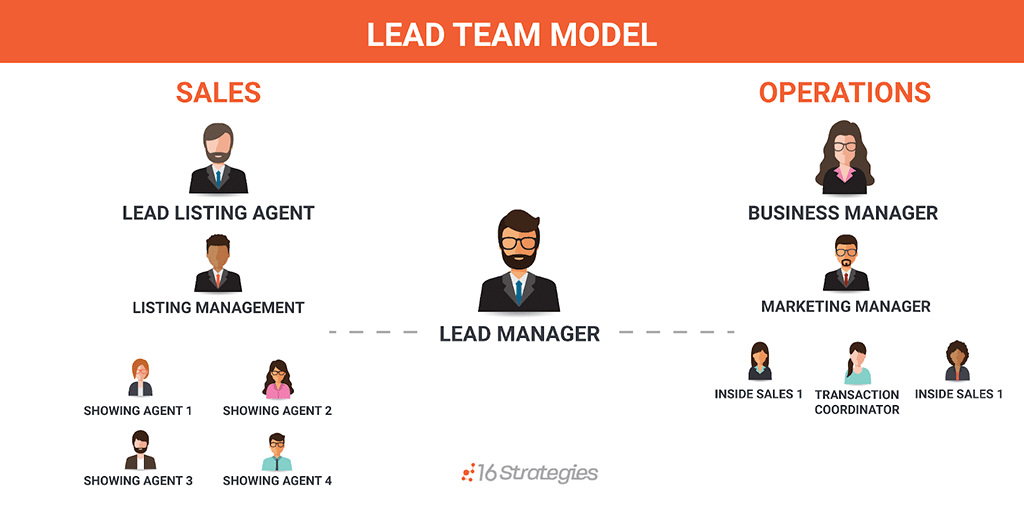In my 28-year real estate career, I’ve built two multimillion-dollar real estate teams and coached some of the most successful agent teams in the nation. I am a firm believer in the value of teams for building long-term success and wealth. But if you want to create one of your own, the challenge lies in choosing the right real estate team structure for you.
Let’s take a look at the three most successful real estate team models so you can make an informed decision and build your own multimillion-dollar team.
But if you’re already itching to make your first hire to start building your team from scratch, I recommend ZipRecruiter, an all-in-one app for recruiting and hiring both agents and support staff. It’s the number one rated job-seeking app on Apple and Android, which is helpful when you’re looking to cast the widest net and find hidden talent.
The Best Real Estate Team Structures for 2023
Before deciding which real estate team model is best for you, you have to understand the financial risks, difficulties, and potential outcomes of each one. Traditionally, the three most successful real estate team models include the mentor-mentee model, the team leader model, and the lead team model. Here’s a quick comparison of each structure:
| Number of Team Members | |||
| Split to Team Member | |||
| Average Annual Transactions per Team Member | |||
| Team Member Retention | |||
| Number of Employees | |||
| Inside Sales Required | |||
| Overall Cost to Operate | |||
| Difficulty | |||
| Scalable to Other Markets |
As we dive into each of these models in greater detail, think about your motivations for starting a team, the strengths and weaknesses you bring to the table as a leader, and your expectations for the local market in the coming year. These individual circumstances will help you craft a structure that will work well for your particular situation.
1. The Mentor-Mentee Model

If you are looking for a low-cost, low-risk real estate team structure, look no further. In this model, you mentor newer agents into the business in exchange for a percentage of their commissions for a specific period (typically 12 to 24 months). After that, the new agent will leave the team and pursue their solo real estate career.
As the mentor, you provide structure, set expectations for success, and answer questions. However, you are not providing leads, paying for marketing, or managing team members. This is a common real estate team model for brokerages that offer revenue sharing from their multilevel marketing (MLM) or downlines, like Keller Williams, Exit, and eXp.
Organizational Chart

As you can see in this chart I created for my personalized coaching business, 16 Strategies, the organizational model is simple. As the mentor, you recruit new team members to your brokerage, train them to be successful, and then you transition them into your downline. To maximize your downline further, teach your team members to do the same. This will grow your downline exponentially and provide you (and them) with long-term residual income.
Lead Generation Strategy
The objective of the mentor-mentee model is to teach new agents to fish (sure, a bit of a cliché—but when it works, it works). They pay you a portion of their commission for access to your lead generation knowledge and experience, not for actual leads or marketing. As a mentor, you can teach outbound prospecting, sphere of influence (SOI) calls, strategic planning, and even how to host an effective open house.
Services & Expectations
Mentors and mentees set their own individual goals. Ultimately, you want your mentees to be successful, so you’ll want them to keep all clients and leads they generate while on your team.
You may choose to provide administration or transaction coordination services, but it’s not required. Team members are responsible for their marketing and advertising. Remember, the value of your team is your time and training, not the resources you are providing.
Team member retention is intentionally low because it purposefully moves new agents into solo production. When your mentees transition into your downline, you receive a portion of the brokerage’s revenue or profit generated from that agent’s transactions, even after they leave your team. However, this long-term income only accrues if you’re part of a brokerage with an MLM commission structure.
Best Real Estate Company to Work For in 2024
Splits & Costs
This real estate team structure teaches its members to become independent agents. Junior associates are responsible for all the expenses associated with being an agent, including marketing, office costs, MLS fees, and brokerage split.
The splits in this model are lower for you than other real estate team models because you are not paying their expenses. Therefore, you can only expect to get between 10% and 30% of their commissions.
The mentee should receive at least 50% of the total commission after the brokerage takes its portion and the split is paid to you. This ensures that your team member makes enough money to stay in business.
Is This Team Structure Right for You?
If you like to teach, are part of an MLM-style brokerage, and want to produce a continuous source of productive agents to fill your downline, this is a perfect model.
However, if you are not building a downline at your brokerage, think twice about this structure. Inherent turnover means you are constantly training new agents, taking time away from your production. You might find that the small portion of commission you earn for training a new agent doesn’t compensate you for the time you could’ve been making sales.
2. The Team Leader Model

The team leader model is centered around actively promoting the team leader or their brand. This traditional real estate team structure also often focuses its efforts around a neighborhood or community.
As the team leader, you provide structure and resources to team members, and team members promote the team leader’s brand, not themselves. Because you’re building a brand around a specific community, high standards and unmatched customer service are essential.
Organizational Chart

The team leader model is divided into operations and sales. The team leader is typically the lead listing agent, and team members take on showing-agent roles. The sales side of the organization may also include a telemarketer and a second listing agent.
On the operations side, this team structure requires at least one employee and one business manager, but is most effective with an additional marketing manager and transaction coordinator.
Lead Generation Strategy
As the team leader, you set lead generation goals, team member expectations, and standards. You are also responsible for leads for the team. Client referrals are the secret to success, so maintaining relationships and providing unmatched service is crucial. Keep lead generation costs low so you can spend those savings on making your client experience second to none.
This structure works best when targeting specific areas, but it can be expanded upon once it’s established and successful. Dawn McKenna (pictured above) is a great example of how a top producer in Chicago expanded her team to the surrounding suburbs and then all the way to Naples, Florida.
An all-in-one platform like CINC can make targeting leads in specific areas easy. Unlike most IDX websites, CINC’s lead generation technology helps you generate hyperlocal leads from specific neighborhoods, school districts, or even gated communities. Once your new site captures a lead, CINC uses AI lead nurturing trained by top producing agents to get them out of your CRM and into your agent’s cars.
Lead Ownership
You may, at times, feel the need to allow the team members to retain clients after closing. But don’t—this could be a huge mistake! You took the time to create the team, assumed the risk of hiring employees, and covered the operational costs. Therefore, every client should remain a client of the team, not individual agents.
This ensures that if and when a team member leaves, the lead will continue to be marketed to by the team and not by the former team member. This must be clear in writing when inviting a new member onto your team.
Services & Expectations
Since this real estate team model is based on maintaining a high level of customer service, you’ll want to provide full-time administrative support so the rest of the team can focus on sales activities. You should also provide all marketing materials to ensure brand quality and uniformity.
How to Set Expectations & Reduce Turnover
Team members should have specific weekly or monthly productivity goals around number of contacts, leads, contracts, and closings.
Generally, team members should produce four to six transactions their first year and eight to 12 transactions thereafter. Half of their business should come from their sphere of influence, while the other half will come from team lead generation activities.
This real estate team structure should have higher retention rates, as long as you’re carefully hiring for a team’s cultural fit. But if a team member fails in customer service or has a poor attitude, it reflects on you and your brand. “Hire slow and fire fast” should be your motto for this team model!
Splits & Costs
Member splits are typically 50-50 or 60-40 (with 40% going to the team), depending on the source of business. You might give a larger split if the team member provided the lead from their sphere.
Remember that your split must be enough for you to provide support and marketing for the rest of the team. If your split is too low, you may end up using your entire commission income on expenses.
As far as costs go, team members should be responsible for their phones, cars, and National Association of Realtors (NAR) dues. However, depending on the percentage of commission you take, you may choose to cover some common business expenses, like office bills, errors and omissions insurance, business cards, MLS dues, and lockbox fees.
Is This Team Structure Right for You?
This is an excellent real estate team structure for someone with an established brand (or someone who has a strong vision for building a brand). You’ll also need high standards, enjoy working with others, and have proven techniques that generate business. Setting expectations is essential, as is selecting the right team members.
However, there are some challenges with this team structure. For example, if you don’t take the time to appreciate your team members, it could lead to resentment and jealousy. To have long-lasting success, you will need to check your ego at the door. Don’t let emotions cloud the bigger picture: total community dominance!
How to Build a Real Estate Team in 7 Steps + Mistakes to Avoid
3. The Lead Team Model

Similar to the previous structure, the lead team model is divided into sales and operations but further distributes salespeople into two halves:
- Inside sales: On the operations team, they deal with inbound leads, follow-up, and prequalification.
- Outside sales: On the sales team, they handle showings, negotiations, and contracts.
This real estate team structure is expensive and requires high transaction volume to keep the machine moving. It’s the riskiest to operate, but when done correctly, there’s absolutely no limit to your success.
Organizational Chart

This model is operations-driven, not sales-driven. The operations team oversees sales, instead of the other way around. It’s essential to have both a business manager for operations and a lead listing agent for the sales team.
The inside sales team on operations follows up on leads from your advertising efforts and ensures lead qualification and assignment. The outside sales team is responsible for showings, negotiations, and contracts.
Lead Generation Strategy
The lead team model’s primary source of lead generation is advertising, which is expensive. You could easily start off paying $500 a month and eventually scale up to more than $20,000 monthly. Your advertising budget should include sites like Zillow and Google, or lead acquisition platforms like Zurple, BoomTown, and kvCORE (see my kvCORE review here).
If you prefer prospecting, your team can reach out to expired and FSBO leads using software like REDX and Landvoice. Just keep in mind that the cost and strategy of lead generation for the entire team is your responsibility.
Services & Expectations
Expensive lead generation products and tight profit margins mean you need to have higher expectations of team members and create rigid daily or weekly milestones that must be met. It’s reasonable to expect each team member to close a minimum of one transaction per month, with a stretch goal of three.
Turnover in this structure can be higher than with the team leader model. To protect your brokerage, be sure to write into your team agreements that clients remain with the team if an agent leaves.
Splits & Costs
Because this real estate team structure is high volume and heavily reliant on systems (not skills), it’s pretty ideal for brand-new agents.
As you hire, look for team members who are highly driven and looking for the right opportunity. You may want to consider covering some of their administrative costs, like MLS and NAR dues, so they can focus on your leads instead of taking a part-time job.
Inside Versus Outside Sales Compensation
Be sure to comply with state employment requirements, including minimum wage, tax withholding, and whether certain team members should be classified as employees or independent contractors. NAR’s legal team put together a useful FAQ on this topic.
Outside salespeople should receive 25% to 30% of the commission or a flat fee of $800 to $1,500 per closing. This may seem low, but remember that the outside salesperson doesn’t have any expenses. Nor do they handle the lead acquisition, manage the lead once it’s under contract, or assume the financial and legal risks that you do.
With this setup, they could easily build up to three to six transactions a month and make $40,000 to $60,000 their first year. You should compensate inside salespeople with an hourly rate plus a bonus for appointments set or successful closings.
Is This Team Structure Right for You?
If you want a large real estate team, but don’t want to embody a brand or meet with every client, this is perfect for you. The lead team model operates on systems that can manage hundreds—if not thousands—of leads every month, which means you can build a scalable business that can generate millions in commissions.
However, you will need significant startup capital. This is the most expensive of all the models to set up and operate, so there is substantial financial risk if you don’t get it right. The most common mistake is overpaying team members. Because the advertising costs are so high for this structure, the margins are just too thin to overpay your team.
The Ultimate Guide to Recruiting Agents for Your Team or Brokerage (+ Scripts)
FAQs
Once relatively rare, teams have really become the backbone of our industry. Now that you have a better sense of the three most successful team models, let me address some other common questions I get about real estate teams, and take a look at what real estate teams look like in 2023.
How do you know it’s time to start your own real estate team?
Here are three important considerations if you’re thinking about starting a real estate team:
- Volume: Are you handling 40 to 60 transactions per year? If so, it might be time to start thinking about building some support through a team.
- Expansion opportunity: Make sure that your business is not only stable, but growing. Will you be able to supply a steady stream of leads (if that’s the model you choose)?
- Desire: Have a serious think about how much you actually enjoy being a leader. Do you like managing people? Are you OK with giving up time that you might spend on transactions to coach others?
What are some other real estate team roles?
Basically, a team consists of a leader, support agents, and operations professionals. This last group might include an office manager, transaction coordinator, an inside sales person, separate specialists for buyers and sellers, a marketing coordinator, and an assistant or runner (someone who completes errands like delivering checks).
Should new agents join a team?
There are plenty of advantages to joining a real estate team, especially for new agents. It’s an ideal way to get support, training, and mentorship. Depending on the team model, it could also mean access to leads, technology, and administrative support.
So if you’re a new agent and don’t have much experience or a network of local contacts and a healthy sphere of influence, joining a team might be the perfect first step.
What does being part of a team mean in 2023?
A recent Workman Success Systems study interviewed more than 500 real estate professionals nationwide and revealed some really enlightening findings about real estate teams in the current market and predictions for the future.
- 80% of those surveyed said they believe that being part of a real estate team makes them more “productive and successful.”
- 81% of participants agreed that being a part of a team makes it more likely that an agent will remain in real estate. This is a powerful statistic that could help combat the industry’s retention problem: a majority of new agents don’t renew their licenses after their first two years.
- Finally, the study argues that “the trend of moving to teams in real estate will continue to grow as stakeholders expect the value, connection, community, and resources that can only be experienced by being on a team.”
All of this means that teams are truly the way of the future. When times are good, they help share the load and increase productivity. When the industry is facing headwinds, a team provides much-needed support. To quote the study, teams represent “a core growth strategy that enables real estate professionals of every age, gender, and experience level to feel valued, gain the resources they need, and be part of a group that brings out the best in them while developing their own skills and serving clients.”
Bringing It All Together
There are thousands of successful real estate teams across the nation, and each has its own unique structure. The three I outlined here are among the most common models, and if you follow my advice, they will give you the best chance of success in building a successful real estate team.
Know of a real estate team structure that we overlooked? Let us know in the comment section!






